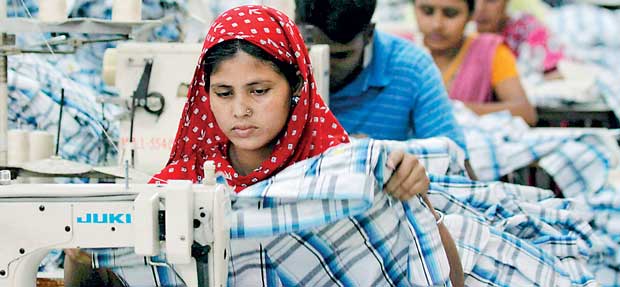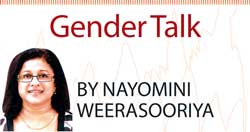Reply To:
Name - Reply Comment

 As Sri Lanka stands on the threshold of the possibility of obtaining the GSP Plus once again, a World Bank report states that South Asia’s clothing industry has the potential to create millions of jobs for women.
As Sri Lanka stands on the threshold of the possibility of obtaining the GSP Plus once again, a World Bank report states that South Asia’s clothing industry has the potential to create millions of jobs for women.
Given such prospects, it can be assumed that the apparel industry can grow adequate enough to empower more women, keep more children in school and provide food for more families throughout the region. The apparel industry has always been seen as a female intensive industry in the region – with women making up 71 percent of its workforce in Sri Lanka, 35 percent in India and 34 percent in Bangladesh, according to the World Bank data. The apparel industry in Pakistan is considered the second largest employer of women, agriculture being the first. Commenting on the region, the World Bank report stated that given the number of people who need employment, it believes that the labour-intensive industries, particularly those that can employ women in numbers, would be ideal for South Asia because of the region’s comparative advantage. The report also noted that the women who work in the apparel and textile sector in India and Pakistan also go on to have less children on average, thereby able to provide better care for their families.
China, the world’s supplier of everything from needles to designer smartphones, is getting more expensive when it comes to wages. Global brands are thus flocking to cheaper locations – in South Asia.
In Sri Lanka, women working in the apparel sector have stories of empowerment to share – although some would prefer to undervalue the contribution women make to this sector. The women themselves are able to secure employment and although hours maybe long and working in places far away from home can be tough, many like to make use of the opportunity to earn an income as well as view the job as a way of getting ahead in life. In large factories, they are fairly well looked after and are able to improve themselves, while taking care of their families. Yet, problems persist –in Bangladesh, a factory collapse that killed many women exposed the thin layer that the apparel industry in South Asia is built on. Safety and working conditions are key issues that define the success of the apparel sector in the region; yet safe or not, the region’s millions needing employment flock to factories irrespective of the conditions.
According to the World Bank statistics, the apparel industry keeps around 4.7 people in formal employment, the majority of them women. Millions more are kept in indirect employment, making up around 40 percent of the region’s employed in manufacturing.
Compared with East Asia’s rate of 62 percent, women in South Asia have one of the lowest rates for participation in the labour force, around 32 percent. Both skilled and semi-skilled women are employed in the apparel sector directly and indirectly.
Given the labour intensive nature of creating garments, the WB experts believe that there can be greater opportunities for more women to be employed in the industry. Second only to agriculture in South Asia, the apparel sector also has achieved a sort of a cultural acceptance. In every village in Sri Lanka, young girls choose to go to work in a garment factory, lured by the promise of what they believe is a good salary. Yet, there are issues too. In Sri Lanka, some factories mourn that there aren’t enough women entering the industry, yet it does not seem to be true for the rest of the region where sheer numbers drive employment at all levels.
The World Bank believes that with more and more women working, there are less child marriages, fewer births and better nourishment for all while dividends such as keeping the children in school and an increase in gross domestic product (GDP) nationally are reaped.
However, the report also states that the salaries paid to women can be better but then, given the bottom line of big brands, this may not change much although fair practices and ethical utilization of labour have become hot topics.
The World Bank report is also hopeful of a wage increase for the region – given the numbers, how this will play out is yet to be seen.
There are setbacks – not every country in the region has its own share of voice when it comes to workers rights. The World Bank report notes that in Bangladesh, regulatory capacity is considerably weak even though there is much better scrutiny of facilities following the disaster at Rana Plaza. Activists believe that although changes are coming, the trickle-down effect to suppliers is slow and may take more time.
Child labour, sexual harassment and the lack of a monitoring mechanism are other issues that concern the apparel industry in countries such as Pakistan and India, the report notes. There are also issues of competition – from emerging countries such as Vietnam.
Yet, for all its concerns, the World Bank strongly believes that the potential of the apparel sector to empower women in the South Asian region is tremendous - which, should mean well for us all.
(Nayomini Weerasooriya, a senior journalist, writer and a PR professional, can be contacted at [email protected])